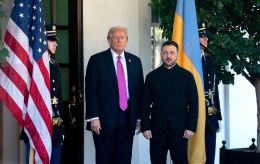Kostiantyn Mashovets: Summer campaign results will impact the course and nature of the war
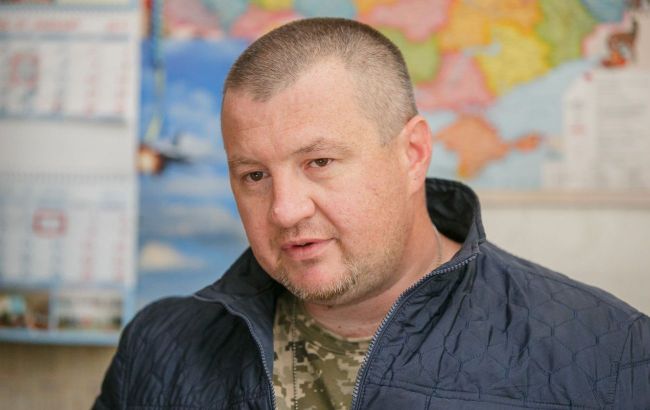 Kostiantyn Mashovets (Photo: Facebook)
Kostiantyn Mashovets (Photo: Facebook)
The Ukrainian Army continues its offensive operations in the south and east, particularly in the area near Bakhmut. Over the course of six weeks, the Defense Forces have managed to liberate nearly 170 square kilometers in the Pryazovia region. Western media are increasingly voicing the opinion that this pace is considered insufficient in Washington. Meanwhile, Ukrainian society largely remains hopeful that its leadership has not yet revealed all its strategies and will undoubtedly achieve significant breakthroughs.
In an exclusive interview with RBC-Ukraine, the Coordinator of the "Information Resistance" group, reserve Colonel Kostiantyn Mashovets, sheds light on what to expect from the war in the upcoming fall season, the main directions of occupiers' advancement, and U.S. assistance in the provision ammunition.
According to Mashovets, Ukrainian Armed Forces' frontline units are continuing their advancement toward the Azov Sea in three directions - Vasilivka, Tokmak, and Berdiansk. He considers the pace and scope of this advance to be minimal at the moment. The expert points out that the enemy is currently trying to hold the supply strip and, in some areas, the first line of defense. However, in certain sectors of the front, our troops have managed to breach it.
"If the Ukrainian forces break through the main defense line, the pace and scope of our advance could increase significantly, even abruptly. Nevertheless, the opponent has prepared a staggered and fortified defense in the southern operational area," Mashovets believes.
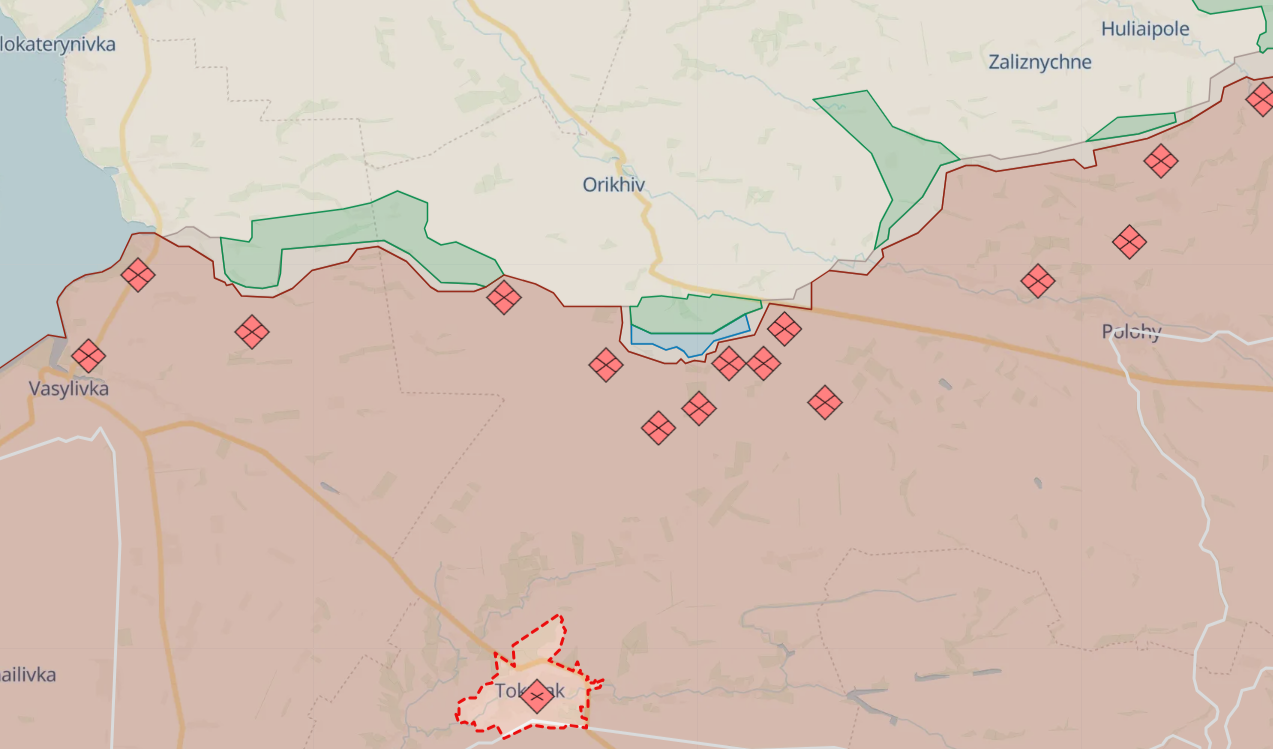 Southern operational area (Photo:deepstatemap)
Southern operational area (Photo:deepstatemap)
The expert is unsure about the strength of the occupiers' main defense line. It's possible that the Russians only have the first line in place, and the rest of the "lines" exist only on paper for reporting purposes.
Despite doubts, it's essential to consider the possibility that the enemy's main defense line is fully equipped with necessary elements, including minefields and fortifications, to assess the prospects for the Ukrainian army.
Regarding the Ukrainian troops' actions in the Bakhmut area, Mashovets explains that they are engaged in a fight for flanks.
"The enemy has experienced a setback on the southern left flank. They are trying to contain the consequences of the left flank's liquidation while simultaneously attempting to hold the right one in the Soledar area. Their position there is not very favorable, but they still confidently maintain control. Furthermore, they have deployed certain reserves to reinforce that area," Mashovets explains.
The enemy in Bakhmut has not yet found itself in a semi-encircled position. As of now, Mashovets believes that the occupiers have no grounds to retreat from there.
"But the advancement of the Ukrainian Armed Forces' frontline units towards the perimeter of Pidhorodne - Pokrovske, as well as Vesela Dolyna - Klynove, should indeed speed it up," Mashovets agrees.
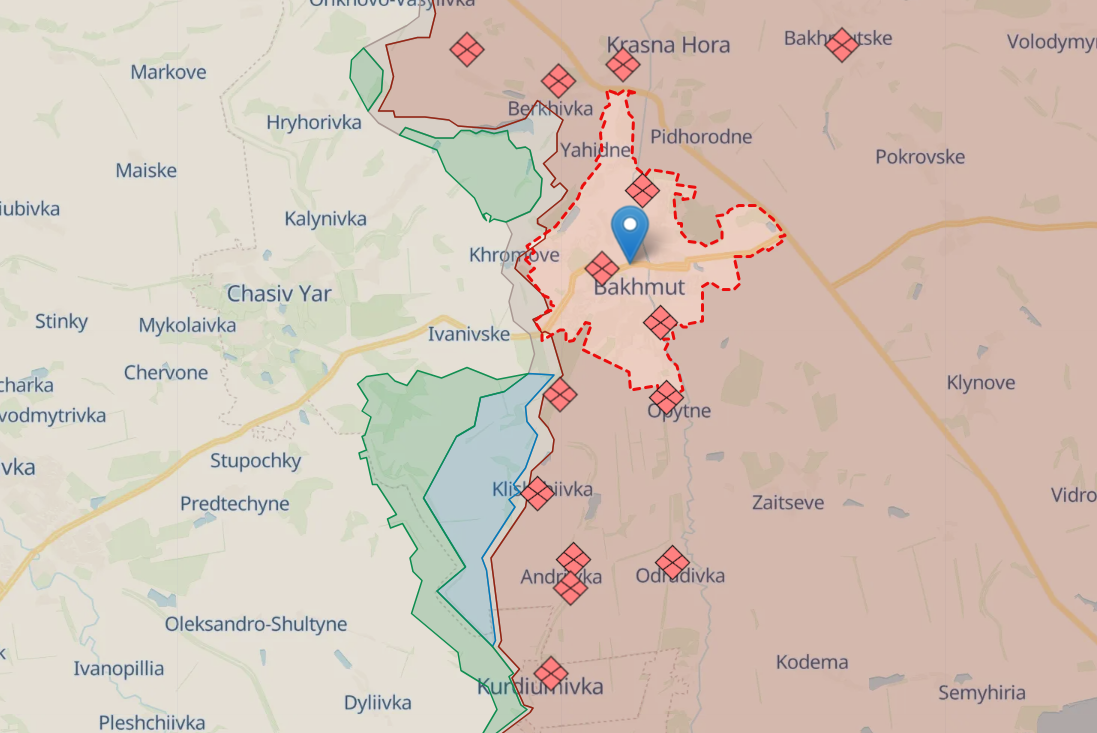 Eastern operational area (Photo:deepstatemap)
Eastern operational area (Photo:deepstatemap)
When asked about where Russian forces prepare to launch offensives, Mashovets replies that the occupiers currently have some tactical success in the directions of Lyman and Kupiansk. They are also attempting to actively advance in the Avdiivka region, which is part of the Donetsk direction, but they haven't achieved success there yet.
"In the Kupiansk direction, they are trying to reach the Oskil River in the Kupiansk-Vuzlovyi area, toward Borova. In the Lyman direction, their nearest objective is likely to reach the Chornyi Zherebetz River, and then "turn" the Ukrainian defense on the left bank of the Siverskyi Donets toward Dronivka and Yampol," says the expert.
Mashovets believes that the enemy will likely reinforce its troops to further develop its tactical success on these two fronts.
"I think they will concentrate their efforts in the Kupiansk direction. Currently, they are creating favorable conditions for their increased activity there. Additionally, they might also escalate their efforts on the Lyman front. Over the past week, the enemy has also brought in reserves near Bakhmut, which could intensify counterattacks in that area," he explains.
Regarding the impact of the summer campaign on the war's course and expectations for the fall, Czech President Petr Pavel, during the NATO summit in Vilnius, suggested that the window of opportunity for Ukraine might close by the end of this year due to various factors, including elections in the U.S. and other countries. Mashovets agrees that there is some logic in these assessments.
"The results of the summer campaign will likely influence the overall course and nature of the war," the expert agrees but refrains from making predictions.
Mashovets acknowledges that the autumn-winter weather may have a significant impact on military actions, but he does not consider it a decisive factor.
"The modern military is significantly more autonomous compared to the forces of the late or mid-20th century. Its technological capabilities, mobility, and maneuverability have reached a different level. This enables it to navigate various types of terrain with ease," Mashovets clarifies.
Furthermore, he is convinced that this autumn, the Russians will once again target Ukrainian energy facilities, as they have done repeatedly over the past few months, starting from October of last year. Nevertheless, he believes that our anti-aircraft defense system will be better prepared to counter such attacks.
Regarding the use of provided cluster munitions, Kostiantyn Mashovets says that Ukraine and Russia have been actively using them since the beginning of the conflict in 2014. However, Western cluster munitions of this type might be more effective than the Soviet-era ones currently in use.
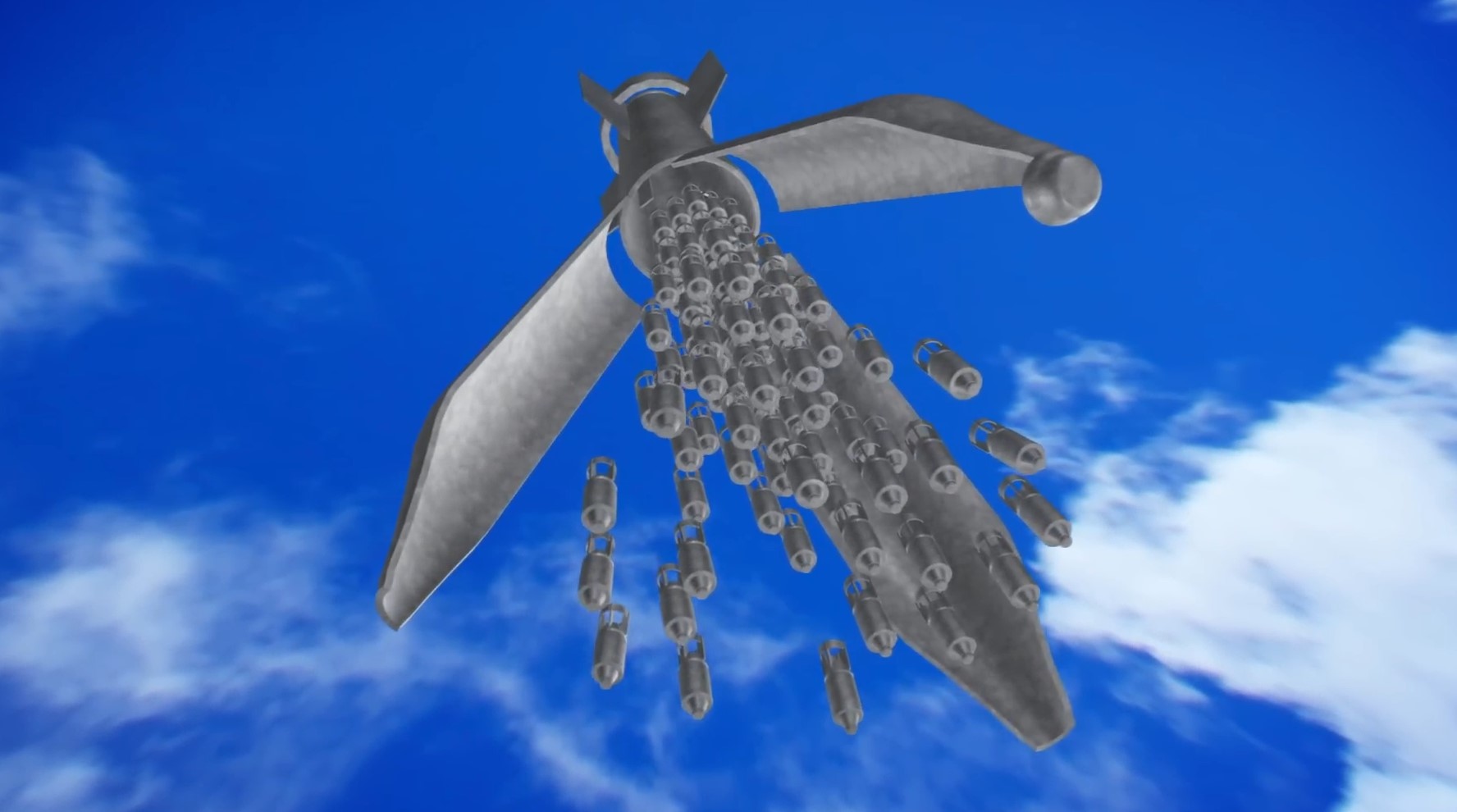 Operation of a cassette munition round (Photo: https://mil.in.ua)
Operation of a cassette munition round (Photo: https://mil.in.ua)
"This could be significant for our military during offensive operations, to 'smoke out' enemy infantry from fortified positions and trenches. Primarily, they are effective against infantry positioned either outside of cover in open terrain or in open-type shelters, as well as light-armored vehicles that can be targeted with these munitions," explains the expert.
According to him, the United States decided to provide cluster munitions to Ukraine so that it can gain a stronger position "before the negotiating process, which is possibly planned for autumn-winter."
As for ATACMS missiles, their use by Ukraine on the battlefield would have "operational-strategic significance" according to Mashovets. He does not believe that the U.S. is reluctant to supply them due to low stocks or fears of escalating the conflict further.
"Of course, they are cautious not about escalation, but something else. I think they are actually afraid of certain military technologies falling into the hands of the Russians, rather than the Ukrainian Armed Forces' reaction to the having of one weapon or another in their arsenal," says the expert.
